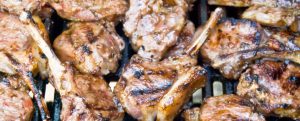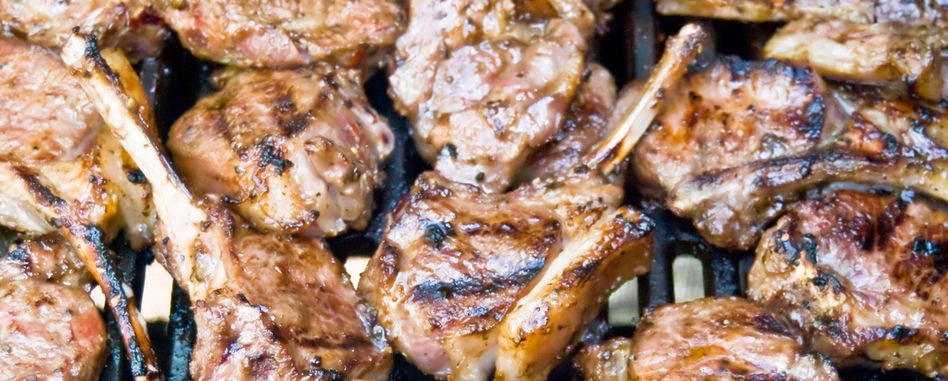
One of the initial mitzvos of the Torah, the Korban Pesach, was given to the Jewish nation as a preface to redemption. It is filled with myriad details, surely a distinct departure from other introductory exercises that leave the participants with simple initiatory protocol.
What is truly amazing is the place where the Torah put the specific mitzvah that prohibits the breaking of the meat bones of the sacrifice, to get to the food.
At first, in the early part of the parsha, the Torah details the way the lamb is roasted and how it is eaten. “But if the household is too small for a lamb or kid, then he and his neighbor who is near his house shall take according to the number of people; everyone according to what he eats shall be counted for the lamb or kid.: They shall eat the flesh on that night — roasted over the fire — and matzos; with bitter herbs shall they eat it.: “You shall not eat it partially roasted or cooked in water; only roasted over fire — its head, its legs, with its innards: You shall not leave any of it until morning; any of it that is left until morning you shall burn in the fire: “So shall you eat it – your loins girded, your shoes on your feet, and your staff in your hand; you shall eat it in haste — it is a Pesach-offering to Hashem” (Exodus 12:4-7).
It makes no mention of the command to eat it without breaking a bone. Only, some thirty verses later, later when the Torah discusses the fundamentals of the offering,does it add that law, as a seemingly misplaced detail among serious edicts: such as who is permitted to eat it; and that the korban is a mitzvah which is incumbent on every Jew.
“Hashem said to Moses and Aaron, “This is the chok (decree) of the Pesach-offering – no alienated person may eat from it. Every slave of a man, who was bought for money, you shall circumcise him; then he may eat of it. A sojourner and a hired laborer may not eat it.
Then it adds, “In one house shall it be eaten; you shall not remove any of the meat from the house to the outside, and you shall not break a bone in it. The entire assembly of Israel shall perform it: “When a proselyte sojourns among you he shall make the Pesach-offering for Hashem; each of his males shall be circumcised, and then he may draw near to perform it and he shall be like the native of the land; no uncircumcised male may eat of it. One law shall there be for the native and the proselyte who lives among you.”: (ibid 43-49).
The question is: why insert the issue of broken bones,a seemingly minor detail, together with the fundamentals of this most important ritual?
When the Satmar Rav came to this country after World War II he had a handful of Hungarian immigrants, most of them Holocaust survivors, as his Chasidim. As the custom is with Chasidic rebbes, they would come for a blessing and leave a few dollars for the rebbe to give to charity on their behalf. The poor immigrants, would come in for blessings, some leaving a dollar, others some coins and on occasion a wealthier chasid would leave a five, a ten, or even a twenty-dollar bill. The rebbe would not look at the offerings; rather he would open the old drawers of his desk and stuff them in, ready, and available for them to be put to charitable use.
Of course, givers were not the only one who visited the rebbe. Those who were in need came as well. Each of them bearing their tale of sorrow, asking for a donation.
Once a man came desperately in need of a few hundred dollars, which the rebbe gladly agreed to give.
The rebbe opened hid drawer, and began pulling out bills. Out came singles and fives, a few tens and even a twenty. Then the rebbe called in his Gabbai (sexton), “Here,” he said, please help me with this.”
The Rebbe began straightening out the bills one by one. Together, they took each bill, flattened it and pressed it until it looked as good as new. The rebbe took 100 one dollar bills and piled it into a neat stack. Then he took out a handful of five-dollar bills and put them into another pile. Then he took about five wrinkled ten dollar bills, pressed them flat, and piled them as well. Finally, he slowly banded each pile with a rubber band, and then bound them all together. He handed it to the gabbai and asked him to present it to the supplicant. “Rebbe,” asked the sexton, “why all the fuss? A wrinkled dollar works just as well as a crisp one!”
The rebbe explained. “One thing you must understand. When you do a mitzvah. It must be done with grace, and class. The way you give tzedoka, is almost as important as the tzedoka itself. Mitzvos must be done regally. We will not hand out rumbled bills to those who are in need.”
The prohibition against breaking bones is not just a culinary exercise. The Sefer HaChinuch explains it is a fundamental ordinance that defines the very attitude toward that Jews should have toward mitzvos. Though we eat in haste, we must eat with class. We don’t break bones, and we don’t chomp at the meat; especially mitzvah meat. That fact is as fundamental as the others it is placed with. A person’s actions while performing a Mitzvah is inherently reflective of his attitude toward the Mitzvah itself. The Torah, in placing this seemingly insignificant, command about the way things are eaten together with the laws of who is to eat it tells us that both the mitzvah and the attitude are equally important with no bones about it.
Dedicated in memory of R’Yisrael Zisha ben Reb Hirsch Mordechai – Reb Yisroel Zisha Tanzer by Mr. and Mrs. Gedaliah Cohen and Family
Copyright © 2001 by Rabbi M. Kamenetzky and Project Genesis, Inc.
If you enjoy the weekly Drasha, now you can receive the best of Drasha in book form! Purchase Parsha Parables – from the Project Genesis bookstore – Genesis Judaica – at a very special price!
The author is the Dean of the Yeshiva of South Shore.


